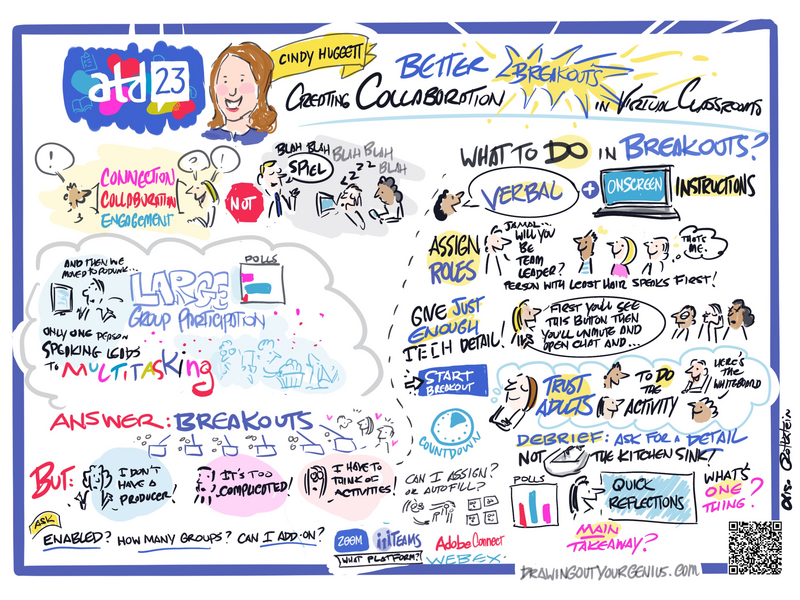ATD Blog
Create Successful Virtual Learning Programs
Wed May 24 2023

Panelists at ATD23 discuss how to get the most out of virtual learning—and how that medium is evolving.
In their new book, Designing Virtual Learning for Application & Impact: 50 Techniques to Ensure Results, virtual learning expert Cindy Huggett, evaluation experts Jack and Patti Phillips, and learning transfer professional Emma Weber give TD professionals the tools they need to make sure their online learning programs are successful. The four, with moderator Michelle Ockers, presented tips from the book Tuesday morning at ATD23.
The book’s relevance comes from the pandemic, when companies were forced to switch learning programs from in-person to virtual sessions. That creates a need for experts, such as the four panelists, to ensure that learning programs yield the results facilitators want to see.

Jack Phillips says the top measure for determining those results is the effect a learning session can have.
“To make a difference in virtual learning, we have to have application and impact,” he explains. “If you’re inside an organization and people never used what they’ve learned, then it’s a waste. So, we have to change our mindset and make sure we’re all focused on getting those results and thinking the results are not there until we actually have the impact.”
Huggett took time to define virtual learning. “We are talking about synchronous, live, online, facilitator-led,” she says. “We’re talking about learners who are dispersed. They are individually connected from their offices, their workspace, their homes. We’re talking about learning that has specific outcomes.”
Huggett also emphasized that it’s OK to have slightly different definitions of virtual learning. It’s more important that everyone in an organization is on the same page about what they want to accomplish with their virtual learning program.
One aspect of getting the desired results of a virtual learning program in the workplace is the buy-in from leadership. The panelists acknowledged that getting that support from above can sometimes be a struggle.
That’s one of the reasons, the panelists agree, that virtual learning, more than anything, should be a collaborative conversation. For example, in one of the book’s case studies, learners reported being treated as adults as opposed to just students. The sessions weren’t just regurgitations of the content. Instead, it was a collaborative conversation, which drives accountability in the virtual learning space. It’s no longer the old-school mentality of a teacher, trainer, or facilitator holding learners accountable.
“It’s helping the individual hold themselves accountable to themselves,” Weber explains. “The more you can get the individual reflecting \[on\] their thoughts, feelings, fears, and needs, they’re going to control their behaviors. Self-accountability is the first driver.”
After reviewing a couple of case studies from the book, the panel finished the session by discussing the future of virtual learning.
“Immersive virtual learning is next,” Huggett says. “We’re seeing that with avatars. You no longer need to press a button to raise your hand; you just raise your hand. It creates a more immersive experience for the learner beyond just the traditional and what we might think of.”
You've Reached ATD Member-only Content
Become an ATD member to continue
Already a member?Sign In
